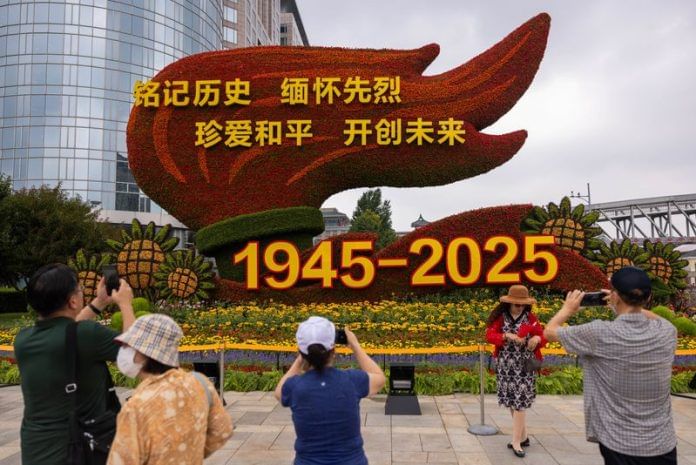By Mei Mei Chu, Joe Cash and Xiuhao Chen
BEIJING (Reuters) -China will stage a massive military parade next month in Beijing to commemorate 80 years since the end of World War Two following Japan’s surrender, mobilising tens of thousands of people and showcasing weapons never seen before.
Hundreds of aircraft including fighter jets and bombers as well as high-tech armaments such as precision-strike weapons capable of travelling at five times the speed of sound will be featured, officials said at a press conference on Wednesday.
The parade, the second such procession since 2015 to observe the formal surrender of Japanese forces in September 1945, will be a show of China’s military strength as some of its neighbours and Western nations look on with concern over the projection of power by the People’s Liberation Army in recent years.
From trucks fitted with devices to take out drones, new tanks and early-warning aircraft to protect China’s aircraft carriers, military attaches and security analysts say they are anticipating a host of new weapons and equipment.
Additions to its expanding suite of missiles, particularly anti-ship versions and weapons with hypersonic capabilities, will be particularly scrutinised as the U.S. and its allies prepare to counter China in any future regional conflict.
“(The weapons and equipment) will fully demonstrate our military’s robust ability to adapt to technological advancements, evolving warfare patterns, and win future wars,” said Wu Zeke, deputy director of the military parade.
New armaments due to debut at the parade will account for a significant share of those on display, according to the military officials. The exact number of troops, weapons and equipment to be shown was not disclosed.
Hundreds of troops were seen practicing manoeuvres in formation at a military camp in a northwestern suburb of Beijing during a visit by Reuters on Wednesday. Groups of honour guards, both men and women, and in rows of 15 or 20, spread out along a runway-like track as officers shouted out commands.
‘VICTORY DAY’
The roughly 70-minute, “Victory Day” parade on September 3, comprising 45 formations of troops, will be surveyed by President Xi Jinping at Tiananmen Square alongside a number of foreign leaders including Russian President Vladimir Putin, who also attended the 2015 parade.
At the last World War Two parade, more than 12,000 soldiers, including diverse contingents ranging from Russia and Belarus to Mongolia and Cambodia, marched through the Chinese capital alongside veterans, including a handful from Taiwan who fought for the Republic of China’s military.
Many Western leaders shunned the 2015 event, wary of the message China would send with its exhibition of military might. Then-Japanese Prime Minister Shinzo Abe declined to attend.
Foreign attendees at the time included former German chancellor Gerhard Schroeder and former British prime minister Tony Blair.
‘PEACE-LOVING’
Authorities have stepped up security in downtown Beijing since the first rehearsals this month, setting up checkpoints, diverting traffic and shutting malls and office buildings.
Beijing has so far conducted two large-scale rehearsals on the weekends of August 9-10 and 16-17, attended by 22,000 and 40,000 people involving troops, police and spectators.
Among participants in Wednesday’s practice manoeuvres in suburban Beijing was Staff Sergeant Lan Yu, 28, who was deployed to South Sudan in 2019 as part of a U.N. peacekeeping mission.
“This year marks my 11th year in the military, and it’s my first time representing the peacekeeping force in a parade,” Lan said.
He said China had always been a peace-loving nation, when asked about concerns overseas about China’s growing military.
(Reporting by Mei Mei Chu, Joe Cash and Xiuhao Chen; Additional reporting by Gregory Torode in Hong Kong; Writing by Ryan Woo; Editing by Jacqueline Wong and Raju Gopalakrishnan)
Disclaimer: This report is auto generated from the Reuters news service. ThePrint holds no responsibility for its content.




